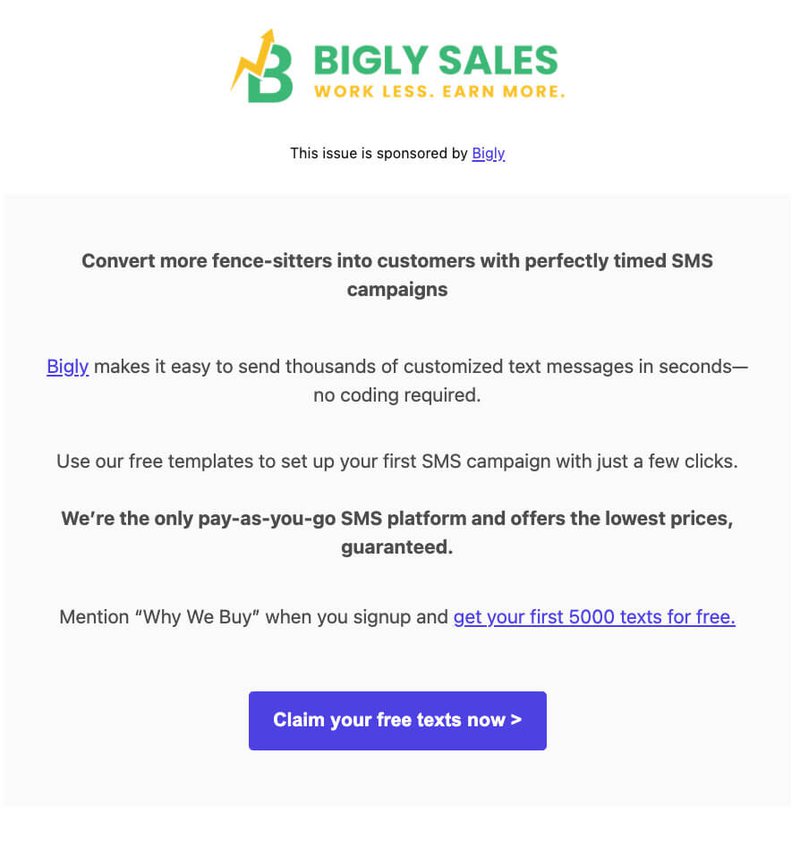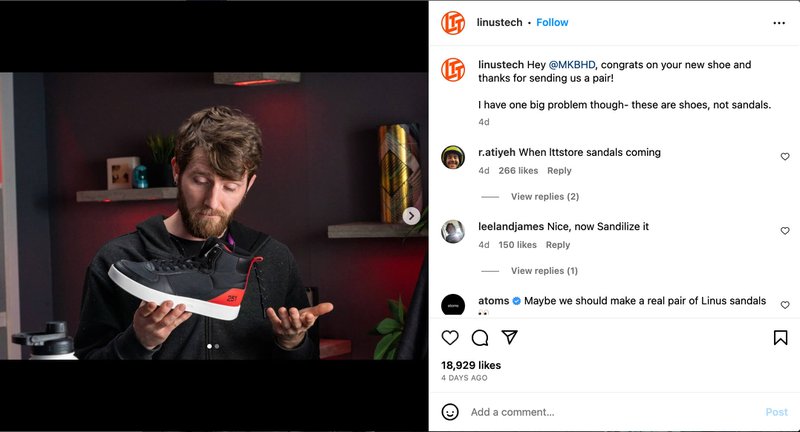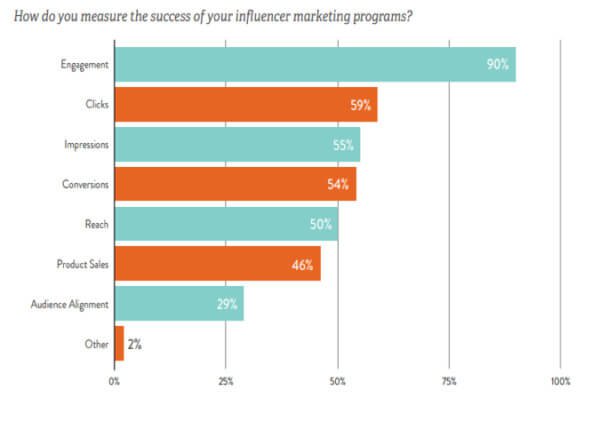The Influencer Marketing Strategy Checklist Every Brand Needs to Know
Want to plan better, more effective influencer campaigns? Here's an influencer marketing strategy checklist to help you out!
Updated November 6, 2024.

Welcome to the cuisine of digital marketing, where every ingredient counts. And if you're looking to whip up a successful marketing recipe, there's one ingredient you can't leave out: influencer marketing.
Now, while trying to get influencer marketing working in your brand can sometimes feel like throwing spaghetti at the wall, hoping sometimes will stick, we have an influencer marketing checklist for you that will make you ditch the proverbial noodles and start putting together influencer campaigns that actually work and bring you results, not just likes.
What is influencer marketing?
Influencer marketing involves partnering with individuals (or brands) with a large following and influence over a large group of people in targeted industries. They promote brands, products, and services on social media channels, blogs, and email lists in exchange for products and monetary payment.
Influencers typically create authentic content and sometimes use creatives provided by their partners to influence their audience to purchase the promoted products.
As a brand, you can successfully leverage the influencers' reach and influence to generate brand awareness, increase sales, and improve customer engagement.
An influencer can be:
- A single person
- A brand
- A blog
- An organization
- A community
An influencer DOES NOT need to be a celebrity. An influencer must impact a targeted group of individuals (social media users) to compel purchases, brand authority, and trust.
More, an influencer can have a smaller following. Although having influence over a large group of people can increase your brand's exposure, influencers must have a loyal following that turns to them for advice and brand endorsements.
What are the benefits of influencer marketing?
Influencer marketing can be extremely beneficial for a wide range of business types. The most significant benefit of working with influencers to promote your products is their relationship with their audience.
People are more likely to believe influencers because they are more like everyone else - they're not a company selling its products, but friends who recommend products based on their experience.
In a nutshell, working with influencers can bring you:
- Increased visibility: Influencers have established a solid following and can help you quickly reach more potential customers.
- Enhanced credibility: Having well-known influencers vouch for your brand enhances your reputation and makes customers more likely to trust it.
- Increased engagement: Influencers have a knack for creating content that resonates with their audience, which can result in increased interaction both from existing and potential customers.
- Better ROI: Influencer marketing is one of the most cost-effective forms of marketing, as it eliminates much of the need for expensive paid advertising campaigns.
Types of influencers
There are many types of influencers:
Celebrity or mega - influencers (1M+ followers)
These individuals have a massive online following, usually in the millions. Think The Kardashians. They have achieved celebrity status online, and they are well-known public figures. They usually have significant influence over their followers, but they are typically costly to work with.
Macro influencers (100k-1M followers)
Macro influencers are usually what you traditionally think about when you hear the word "influencer." They are large enough to generate attention but small enough to maintain a niche audience. They can also be celebrities; however, they are often industry experts with significant influence in their niche.
Micro - influencers (10k-100k followers)
Micro - influencers are the crowd's favorites: these influencers have a smaller audience size but a very engaged tribe of followers. They are seen as more authentic and trustworthy than macro and mega influencers, making them ideal for most brands.
Nano influencers (500-10k followers)
Nano influencers have a small but highly engaged audience. They are often regular people who are passionate about a particular topic or interest and have an active community that trusts them. Nano influencers are usually ideal for local influencer marketing campaigns.
Other types of influencers
While the main influencer categories fall into the size of their audience chart, there are other types of influencers to take into consideration:
Amazon influencers
An Amazon influencer is a content creator, blogger, or social media marketing influencer who is also a member of Amazon's Influencer Program. They provide inspiration and recommendations to help shoppers find the best products and brands on Amazon.
Amazon Influencers can set up a storefront featuring products from different brands that sell on Amazon. They earn commissions on purchases made through their storefronts.
Brand ambassadors
Brand Ambassadors are individuals usually contracted out for multiple campaigns to promote a brand's product or service on their social media channels. They typically receive a commission from sales, signups, and other conversion metrics and are often seen as the face of a brand.
Types of Influencer Partnerships
Influencer marketing can take many forms and involve various social media channels and content types. Here are some examples of influencer marketing partnerships:
Unboxing videos
These campaigns are usually run on video-based social media platforms, like YouTube, TikTok, or Insta Stories and Feeds.
In these campaigns, social media influencers can showcase your products by creating unboxing videos that give their followers a peek into what they received and their initial reactions. These videos can be shared on various platforms, including YouTube, Instagram, and TikTok, and can generate a lot of excitement and engagement among the influencer's followers.
Video review of our products and offers
Social influencers can also record video reviews of your products, highlighting the features and benefits that make them unique. These reviews can be shared on YouTube, Instagram, or other social media channels and can help build credibility and trust with potential customers.
Endorsing your product in an email campaign
Email campaigns are another effective way to reach potential customers, and influencers can help by endorsing your product in their email newsletters. This can introduce your brand to a new audience and encourage them to check out your products.
Linking brands in a social media post
Influencers can also promote your brand by sharing a post related to your website, social, or product page. These posts can be shared on various social media channels, including Instagram, Twitter, and Facebook, and generate a lot of traffic and interest in your brand.
What makes influencer marketing successful?
Many companies struggle with influencer marketing because it needs to be thoughtfully planned, executed, or authentically aligned with the audience.
Many factors can affect the performance of an influencer marketing campaign:
- Selecting influencers who aren't aligned with our brand or wouldn't usually use our product.
- Not evaluating the influencer's target audience alignment before partnering up.
- Pushing a rigid script on the influencer rather than collaborating on a creative approach they feel will resonate with their fans.
- Failing to set clear terms and timelines for your agreement
- Publishing blatantly promotional, hard-selling content that turns off fans
- Not setting up proper tracking, URLs, or landing pages beforehand.
Yet, if you proactively seek to avoid making these mistakes and execute your influencer campaigns correctly, it can work beautifully for your brand.
How beautifully? Consider the following influencer marketing stats by HubSpot:
- 72% of Gen Z and Millennials follow influencers on social media.
- 33% of Gen Z-ers have bought a product based on an influencer's recommendation in the past three months.
- A TikTok from a macro-influencer (someone with 100,000 to 1 million followers) receives 38,517 views on average.
- Three-quarters of your millennial and Gen Z audience follow influencers on social media. If your video gets 38k views on this influencer's TikTok, about a third of them might buy your product.
Influencer marketing mistakes to avoid
While working with influencers can be very advantageous, it's worth mentioning there are some mistakes you should try to avoid:
Unclear KPIs
Before collaborating, it's essential to ensure you have a mutual understanding of the goals of your campaign. This will help avoid any confusion about expectations and ensure the best results are achieved.
Prioritizing the wrong metrics
Vanity metrics can be a challenge -- for influencers and marketers alike. When striking a deal with an influencer, focus on the relevant metrics and goals, such as engagement rate or click-through rate, rather than reach, follower count, or likes.
Not researching the influencer
Before you work with an influencer, research them and learn everything about their content, followers, and engagement history. You want to make sure that the influencer you choose fits your brand values and goals.
Sending inaccurate briefs
Your brief needs to be crystal clear. It should include details concerning the influencer's requirements, such as deadlines, brand guidelines, how you expect them to frame your promotion, and so on.
Restricting creative freedom
Restricting an influencer's creative freedom can devoid your campaigns of the value they can bring to your brand. Collaborate with influencers, and allow them to interpret your message in their own unique way -- after all, you want them to present your product in an organic, natural way, right?
Wrong expectations
You can expect miracles. Yes, working with freelancers is highly beneficial and will result in increased brand visibility and sales - but it's not a silver bullet that can fix all your problems overnight. And it's not like you could turn every influencer shot into a TikTok ad. Set clear, realistic expectations about your influencer marketing and measure progress thoroughly.
Influencer marketing strategy checklist
Now that you understand why influencer marketing should be critical in your marketing recipe let's discuss how to properly execute an influencer marketing campaign.
Determine your campaign goals
The starting point is determining the goals of each campaign. Sales will almost always be the #1 goal, but every campaign is different and needs to be set up accordingly. For example, if you are launching a new product or line, you need to set up your partnership for pre-orders and push the message and value this new line brings. A macro influencer would be a great choice here.
However, if you are looking for abundant content creation, you might opt for smaller influencers willing to create more content for smaller rewards. And if you are pushing for brand awareness and reach, you will best collaborate with an influencer with a larger following to achieve those goals.
Determine your budget
Like every other marketing initiative, a budget must be attributed to each influencer campaign.
A budget will include monetary value like a fee directly paid to influencers or the monetary value of products offered.
Budgets can be attributed per campaign, per month, or per project.
Maintaining a realistic outlook of the budget and expected outcome is essential. This will determine the quality of content creators and content you will receive, as and number of content pieces produced.
Choose your platform
Most influencers are popular on one platform, and their engagement rate and efficacy will be significantly higher on that platform. When looking for influencers, focus on the platforms they are popular on (and keep in mind where your audience hangs out too.)
Selecting the right influencers
You need to find the right influencers for your brand and audience. You must curate influencers with influencer marketing tools, based on niche, keywords, hashtags, follower numbers, and other criteria relevant to your brand. Otherwise, your campaign will not be successful.
For example, if you sell jewelry online and are looking for some good influencers to promote your stuff, you need to find a content creator that’s experienced in creating content for eCommerce brands in that niche.
The bottom line is - the right influencer is the one whose engaged audience matches your target audience.
Note: Only some influencers you contact will accept your proposal, and not everyone who says yes will be a great fit. That's ok. The key is to do a lot of research and to know what kind of influencer your audience will like the most.
Choose the right type of campaign
Once you identify influencers and set up your budget, it is time to choose the type of campaign that works best for your objectives. For instance, you might opt for sponsored content if you're looking for brand awareness and reach.
On the other hand, product reviews and giveaways will require more of a commitment from influencers and, thus, more of a budget.
Locking in deals
Once both parties say yes, you should lay out an agreement in writing listing expectations from both parties, such as:
- products offered in return for endorsement
- monetary compensation offered and affiliate percentage
- brand ambassador link and or unique code
- brand ambassador terms
- expected product shipment timeline
- expected content creation timeline
- expected content posting timeline
- anything else about that particular transaction
Controlling the narrative
One critical component of successful influencer marketing is ensuring you control how your brand is presented online. Influencers and content creators will have your best interest in mind when finalizing collaborations, but only when they know what you need them to do.
A good starting point is to create a PR document/ Influencer brief to tell the influencers what you want them to deliver. This should include the following:
- Talking points
- Type of content
- Mood board
- All social handles
This will allow them to add their voice to the content, but with particular talking points.
Tracking and measuring
Influencer partnerships need to be measured and tracked as every other marketing item,
Primary tracking metrics you should keep track of:
- Direct sales
- Clicks
- Impressions
Additionally, you should evaluate our influencers' overall performance to determine repeat collaborations:
- Ease of communication, understanding of campaign needs and directions
- Producing quality content that aligns with the brand
- Quick turnaround on content creation
- Whether the content is engaging for your audience
How to select the right influencers
Now that you know how to run an influencer campaign, let's talk about how you can find the right influencers for your brand.
What is a good influencer and content creator?
A good influencer's audience matches ours and can create content aligned with our brand and a common audience.
Select the right influencers for your campaigns in 3 steps:
Pre-selection
To make your influencer marketing campaigns successful, start with a list of influencers that perfectly fit your brand.
You'll first want to use influencer marketing tools to curate influencers based on niche, keywords, hashtags, follower numbers, and other criteria important to our brand.
Once you have pre-selected your influencers, it's time to reach out and start a conversation. Use tools to pre-select your influencer list, but reach out manually to get the conversation started and ask them if they are open for collaboration.
Ask if they're open to collaboration, and if they are, let them know what you're offering and what you'd like in exchange.
Recommended influencer marketing tools:
Vetting and selection
Keep in mind that not every influencer you reach out to will be interested in collaborating, and not everyone who says yes will be a great fit for your brand.
Selecting the right influencers for your campaign is critical to its success. That's why when curating your list of influencers, it's important to consider their audience demographics, interests, and behavior to ensure that they align with your target audience and brand values.
More, look at the influencer's engagement rates, such as likes, comments, shares, and click-through rates, to determine how active and involved their followers are.
Checking the influencer's past collaborations and sponsored content can also provide insight into how successful their previous partnerships have been and whether they're a good fit for your brand.
Another aspect to consider is the influencer's content quality, including their aesthetics, tone, and messaging. You want to ensure that the influencer's content aligns with your brand's image and messaging to maintain consistency and resonate with your target audience.
Lastly, it's important to establish clear communication and expectations with the selected influencers throughout the campaign to ensure that everyone is on the same page and that the collaboration runs smoothly.
Locking in deals
Once you find the right influencers, have a conversation, see a fit, and get a "yes" on the campaign starting, it's time to put together your influencer marketing agreement.
An influencer marketing agreement is a contract that outlines the terms and conditions of the collaboration between your brand and the influencer.
The agreement should include the scope of work, compensation, deliverables, and other important details related to the influencer marketing campaign.
An influencer marketing agreement aims to establish clear expectations and responsibilities for both parties and ensure that the collaboration runs smoothly.
Typically, an influencer marketing agreement includes the following:
- The number of content pieces to be produced
- Specific content types and what platforms to optimize for
- Products offered in return
- Monetary compensation provided (if applicable)
- Brand ambassador link and or unique code
- Brand ambassador terms
- Expected product shipment timeline
- Expected content creation timeline
- Expected content posting timeline
- Anything else on that particular transaction
Tracking and measuring
Influencer partnerships must be tracked as every other marketing item, including targets, expected vs. actual results, and future Plans of Action.
You should track the following vital metrics every time you enter an influencer marketing contract:
- Direct sales
- Clicks
- Impressions
Additionally, you should evaluate your Influencers' overall performance within your partnership to determine repeat collaborations:
- Ease of communication, understanding of campaign needs and directions
- Producing quality content that aligns with the brand
- Quick turnaround on content creation
- Their content is engaged by our audience
Like a recipe, an influencer marketing campaign requires the right ingredients and a well-executed plan to succeed. Unlike a recipe, however, every influencer, brand, and campaign is different -- so take the tips in this article as a guideline more than anything.
This checklist can help you curate the right influencers for your brand, establish clear communication and expectations, and create engaging content that resonates with your target audience.
From selecting the right influencers to crafting the perfect agreement and content, creating a mouth-watering influencer marketing campaign is essential to leaving your competitors in the dust.
So put on your apron, gather your ingredients, and start cooking up an influencer marketing campaign to delight your audience and leave a lasting impression!







